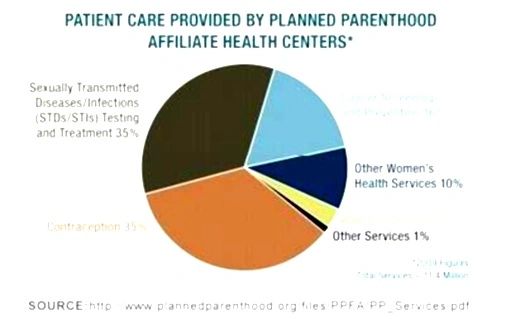
Break the Duopoly
Breaking the Duopoly: Tea Party and MoveOn 041011
A Fringe Comparison
NOTE: A lousy internet connection when putting the paper up made it impossible to embed the links. If they aren't live, you'll have to cut and paste into your browser address line!
A recent article on the Tea Party brought some criticism from some of our most valued readers. The remarks about MoveOn ignited some rancor.
Both groups intend to force the two hoary hogs, the Democrats and Republicans, apart.
The exclusive dance the two parties do together produces a lot of oppositional rhetoric, but in general the nation runs the same no matter who is in office. There are at least two reasons for that.
One is that the nation is actually run by bureaucrats who don’t go anywhere when the parties change. These lifers do what they do no matter who is in office. Some things change, but in general the flow of politicians is mostly a nuisance to the cadre of public servants who run the country. They have a strong desire not to change, except to have their purview broadened.
The other reason is that the two parties benefit by speaking differently, but doing things largely the same. The power elite spans national borders, this is why there was a Bin Laden family visit with the Bush White House when the airplanes hit the twin towers. For this reason, we will always spend too much on the military, but services to the poor will fluctuate according to the health of the national coffers. The humans that inhabit the structures of power within the two parties have more in common with each other than they do with the people they “serve”.
The two parties have held joint power since the middle 1800s. The parties are by no means unchanged, and they have traded roles many times. The Republican party started life as a party of reformation, and is responsible for the death of states rights and the birth of federalism. They are the party of prohibition. The Democrats in the South worked hard to keep Blacks from voting, but in the early 1930s Blacks moved to the Democratic party because they benefited from progressivism. The parties have, Yin/Yang-like, factions which draw the two parties together. Moderate Republicans and Blue Dog Democrats (the Republican wing of the Democratic party) often agree on social and fiscal issues. Our own Tom McClintock is a libertarian Republican which sometimes puts him in line with libertarian, or “small government” Democrats.
There have been many “third party” attempts, and there are currently about 40 parties registered somewhere in the U.S. including the Whigs http://www.modernwhig.info/, the United States Marijuana Party https://www.usmjparty.org/ and of course, the Party Poopers Party http://www.prohibition.org/ .

The United States Marijuana Party
The largest third party is the “independent” or “decline to state” vote. This large minority of voters who often determine elections represents the level of dissatisfaction the voters have with the two major parties.
However, as parties they often have little clout in a long term way, even the number of “independent” voters fluctuates.
MoveOn and Tea Party are not political parties in and of themselves, and represent a hybrid way of moving the parties apart.
MoveOn.org is said to have 5 million members. Though there is a rumor that billionare stock speculator and Hungarian immigrant George Soros has put $25 million into MoveOn, the truth seems nearer to $2 million. MoveOn claims that the majority of their funding comes from small donations of $100 or less. Learn more HERE. http://www.moveon.org/about.html Soros has become a bogeyman in the eyes of some conservatives because he’s used his millions to promote open government and other progressive and humanitarian causes.

On the front page of MoveOn: Do you know what Planned Parenthood actually does?
MoveOn typically polls members to determine what issues or politicians to support or oppose. Most of the ad material comes from members. The membership is thought to be less purely white and wealthy than the Tea Party, which is mostly white, more male and typically more wealthy than the average American. MoveOn is thought to be more broadly representative of all Americans. The agenda is progressive, focused on human needs and humanitarian concerns. MoveOn members typically don’t support nuclear reactors or big oil. MoveOn members typically do believe in human augmented global warming. Rarely does MoveOn endorse a non-democratic politician.
MoveOn has been accused of creating ads in poor taste, and engaging in exclusion of some candidates.
The Tea Party is less cohesive than MoveOn. The official website might be HERE http://www.teapartypatriots.org/ or it might be HERE www.theteaparty.net .
The Tea Party at the national level is hugely funded by the Koch brothers, who make money from oil, chemicals, agribusiness and international investments.
As a movement, the Tea Party is about curtailing government spending and undoing some progressive legislation. National representatives of the Tea Party include Sarah Palin and Meg Whitman. The Tea Party Patriots promote as their mission fiscal responsibility, limited government and free markets, all largely related to the dollar. The Tea Party has been accused of obstructionist politics and distorting facts.
According to some polls, Tea Party voters tend not to believe in global warming, and stand firmly against universal health care. Currently, Tea Party politicians are attempting to squeeze the Federal budget, though most don’t want to curb military spending, which for wealthy industrialists like the Koch brothers and Dick Cheney, doesn’t cost, it pays.
It might well be a good idea to force the political parties to stretch past “center” for the Democrats and “right of center” for Republicans. The Fringe Editor will join other political observers in saying there is no significant leftist party in the United States.
Voters should consider supporting either the Tea Party or MoveOn as a way of loosening the grip the two old parties have on American politics and political thinking.
